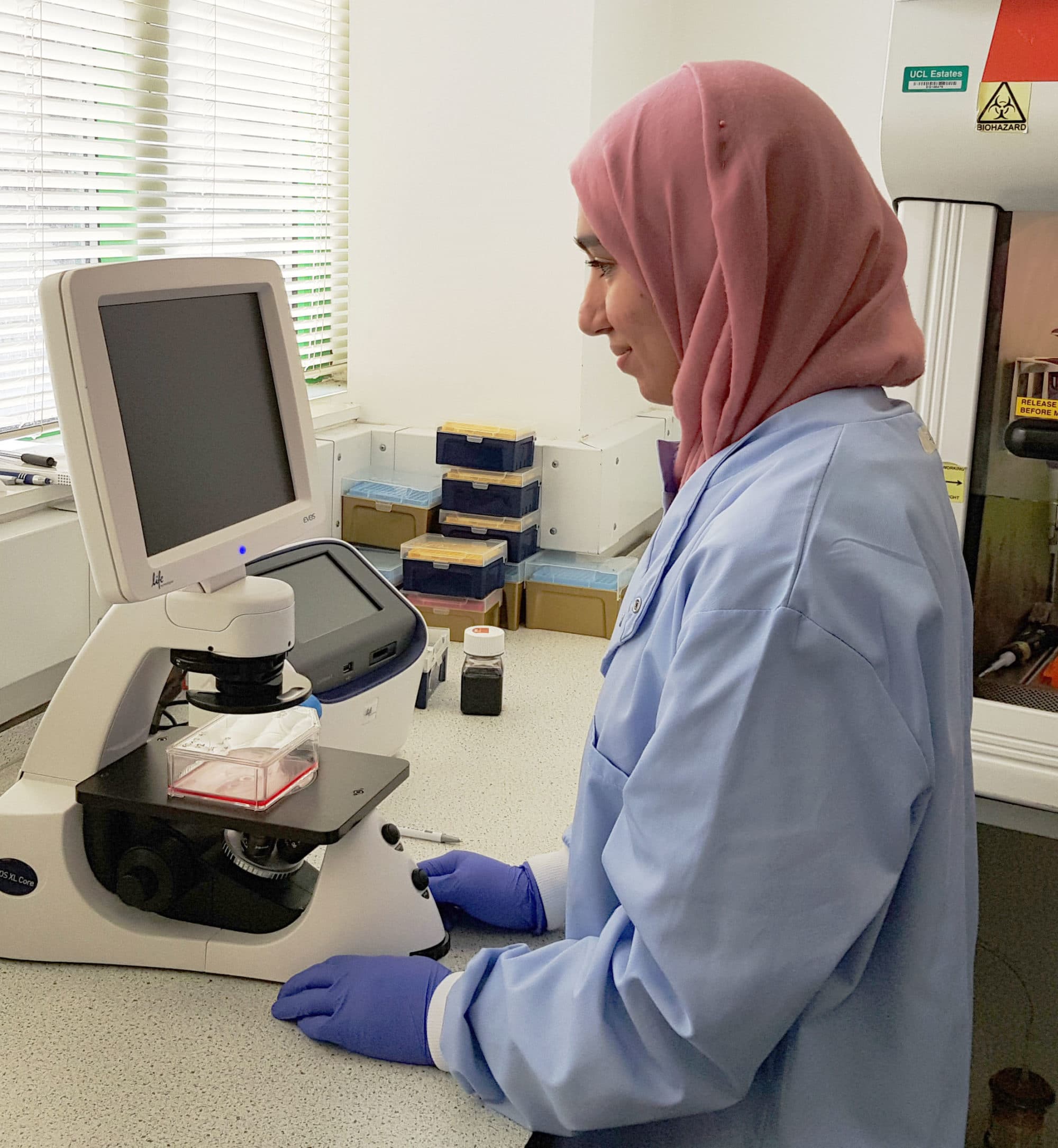In particular, she is looking at how RDH12 is affected by inherited mutations in the RDH12 gene, which cause Leber Congenital Amaurosis (LCA), a severe form of childhood-onset sight loss. Hajrah took some time out of her busy day in the lab to show us around and tell us about her work.
“I am really fascinated by the structure of protein molecules – how they fold to create their unique shape and how this influences their interaction with other substances. This was the focus of my Master’s degree at Imperial College, and I was keen to undertake the PhD project here in Dr Moosajee’s lab because it fits exactly with my scientific interests.
“When the gene providing the instructions for building RDH12 has mistakes in it, the resulting protein can end up being the wrong shape, so I am investigating the mechanics of how this affects visual cycle and, ultimately, how we might rectify the problem with future treatments. It was really important to me when choosing this project that I would be working in a team focused on translational research – that is, research that aims to translate increased scientific understanding into potential therapies.
“There is really no such thing as a typical day in the lab. In order to study disease processes, we use intricate procedures to convert skin or blood cells from people affected by RDH12 mutations back into stem cells, and from there into retinal cells. This allows us to create models of human retinal disease called eye cups, which we can study and use to screen potential treatments. I spend quite a bit of time looking after the cells, feeding them and checking that they’re growing.
“I also read lots, keeping up to date with the latest papers and looking for new ideas. These might come from researchers looking at other types of inherited sight loss or completely different conditions; we can all learn from each other and I hope that our work here might help scientists working on other retinal diseases to find pieces of their own puzzles.
“I love the practical work in the lab, finding new ways to solve problems and trying to understand why things are going wrong in disease. There are always a few setbacks here and there, our experiments need a lot of optimisation and often need to be re-run several times but we learn from all of it.
“Because Dr Moosajee is a clinician, we get lots of opportunities to meet people affected by inherited sight loss, and this really motivates me – it really puts into perspective the importance of the work we’re doing in the lab. Our goal is always to find a treatment; we know that families affected by sight loss are coping with such a lot. My ultimate hope for this project is to identify a potential therapy, whether that be through gene therapy or a more traditional drug.
“Skin and blood cells donated by Dr Moosajee’s patients at Moorfields are essential for my work. When patients donate cells, they are helping us get one step closer to the answers – it might take a long time but we will get there. Every piece of information matters.”

